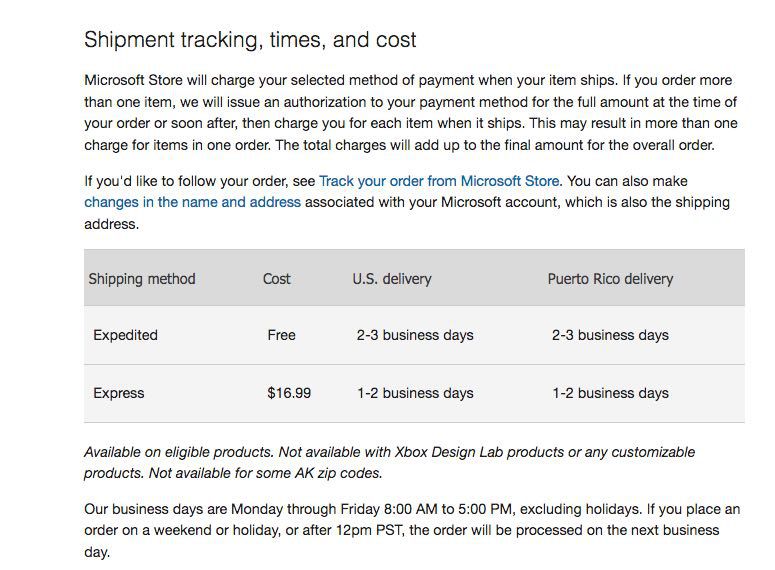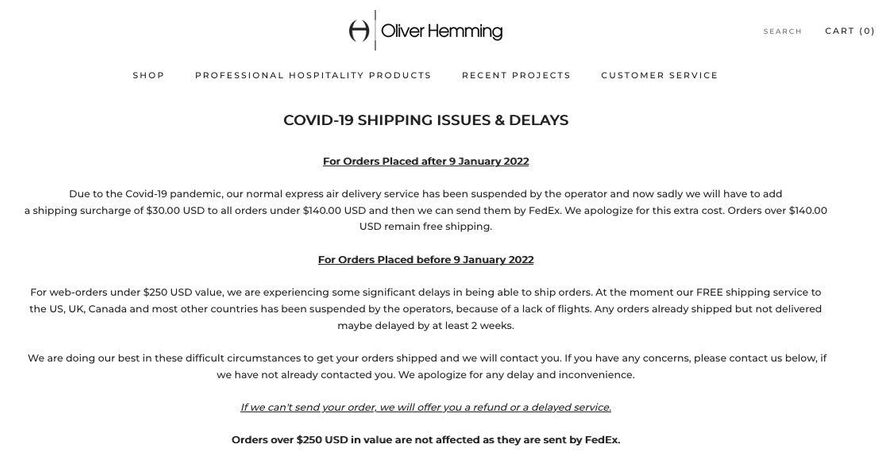10 Ecommerce Shipping Best Practices
If you click to purchase a product or service based on our independent recommendations and impartial reviews, we may receive a commission. Learn more
As an online business owner, adopting best practices will help you gain trust with potential customers. However, it’s not just about big issues like figuring out how to sell online or paying taxes on time or managing your ecommerce inventory.
Sometimes best practices on “smaller” issues like shipping have a huge impact on your online business. But you may not know where to begin. This article will give you 10 ecommerce shipping best practices that pull together our knowledge and resources. We want you to optimize your shipping policy, and we’ll give you examples of these practices.
Here we go!
What Is Ecommerce Shipping and Why Is It Important?
Ecommerce shipping is the process of receiving and fulfilling online orders. This starts with your website’s order-taking, runs through to your packing, and shipping your products.
There are a variety of factors in ecommerce shipping like the product, cost, convenience, distance, and other special considerations. Regardless of the factor, shipping strategy is crucial to business success.
10 Ecommerce Shipping Best Practices
#1. Create an Awesome Team
If your ecommerce business requires more than one worker, you must put together a great team who will best follow your shipping practices. Otherwise there’s potential for hundreds of costly mistakes.
Necessary skills include:
- Care when packaging the products
- Understanding the pricing process
- Marketing the customer-friendly benefits of your policies
- Implementing the calculator needed to show your customers shipping cost and delivery date choice
- Customer care throughout the process
Advice from the Experts
Top Tip: As the owner of your business, your time needs to be calculated at a different rate to any potential packing employees. When you pack, it takes away time from more expensive and time-consuming tasks like marketing, correspondence, accounting, etc. So bringing someone in to help with shipping might be cheaper than doing it yourself.
#2. Offer Shipping Rate Transparency
The verdict is in: 85% of customers demand shipping transparency. Disclose shipping rates as soon as possible, like this disclaimer at Topaz Sailboats.

Hiding a huge shipping cost until the last minute is a nasty surprise for your customer, and their trust in you can be irreparably damaged because it feels like a trick. You’re already competing against larger brands, so customers should see your transparency to build a good relationship.
#3. Keep Shipping Costs Low
Naturally, cost is a huge issue! You don’t want to bankrupt yourself, but you want to keep customers happily buying your products. Besides choosing the most cost-effective way of shipping your products through a calculator, there are other things you can do to help (for example, check out how to ship free with Shopify).
Double-check your carrier rates and renegotiate your fees. If they aren’t budging you could try an ecommerce shipper platform which discounts more heavily. Choose cost-effective packaging wisely (like poly mailers, similar environmentally-friendly versions and the carrier’s own,) find lighter and smaller products when possible, and use third-party insurance.
#4. Consider Free Shipping
To free or not to free? This service is offered by a huge variety of companies, including your big competitors like Amazon. Customers love it – 73% of customers will buy an item if it has free shipping.
You’ve got plenty of free shipping options here. You can offer across-the-board free shipping and fold the cost into your product prices. Or provide a spend threshold, like Alaffia, which gives free shipping for orders over $50. Provide this service for your smaller and lighter items sent locally, or give free shipping to loyal customers only. Or why not offer curbside pickup?

Advice from the Experts
Top Tip: If you want more detail on the best ways to implement free shipping on your own store, check out our guide on How to Offer Free Shipping for a more in-depth step-by-step breakdown.
More Information
- Best Shipping for Small Businesses: See our top shipping options for small businesses in our detailed article
#5. Offer Shipping Options
The more options the better. Customers like choice. Many ecommerce businesses like the Microsoft online store offer at least three shipping options including free delivery, standard delivery, and express delivery.
Though the cost might be very high, consider offering an international shipping option as well. 70% of online buyers place their orders from international sites and 96% of American eBay small businesses sell to the same 17 countries. It just might make serious financial sense for you to do it.
If you have international customers (or want some), it’s not enough just to ship to them, you need to appeal to them by localizing your ecommerce business to each target region. You can find out more about ecommerce localization here.

#6. Allow Order Tracking
Package tracking is important because we get antsy when buying online, right? Who doesn’t have a missing package horror story? Tracking offers certainty because your customer gets an accurate delivery time.
Package tracking makes you less vulnerable to the old “I never got my package” claims, helps you get your insurance from missing/damaged packages sooner, and helps deter thieves tempted by your customers’ goodies.
Footlocker’s order tracking guide informs their customers of how to track, regardless of situation. You can even send tracking details in emails to update customers on their order status!
Whether your customer is on the move, or has to run errands, or is stuck at work late, if they have a good idea of delivery time, they can be at the right place at the right time.

Advice from the Experts
Top Tip: If your customer can trace their package, they won’t be panic-emailing you every five minutes.
#7. Be Responsible for Shipping Issues
No one likes customer complaints, but we’re talking best practices here! If there are supply chain and delivery date issues, contact your customers immediately and offer solutions to the problem. Oliver Hemming’s website has an open apology for recent shipping issues.

Don’t just hope the problem works itself out. You know that feeling when you’re waiting for a delayed flight, but they won’t update you on what’s happening or when it will be sorted? You don’t want to give your own customers the same feeling. Worst case scenario, you offer a refund, but you’ve probably saved your relationship with them.
#8. Create and Follow a Shipping Strategy
Shipping costs are more than just postage. Factors include packaging, labor, import/export fees, international postage rates, insurance, etc. – these are added on top of the postage costs, which can be calculated on the websites of individual carriers like UPS or through comparison websites.
Knowing the true costs will help you decide which strategy works best for you and converts to sales. Etsy seller XanaLu sells tiny packages of necklaces, so it’s cost effective to have a free delivery policy with extra express offers.

Advice from the Experts
Top Tip: Your shipping strategy should also include your returns policy. Make certain that it’s clearly stated, fairly implemented, and mail-friendly.
#9. Highlight Expected Delivery Dates
Though cost is a main issue, the customers are most interested in shipping dates. A full 25% of customers abandon their cart if there’s no same-day shipping option, so it’s something to think about.
Whether your customer is last minute buying, has an unexpected gift they have to ship fast, needs to provide an accurate address for a workday delivery, or is simply impatient, they want to know dates.
O’Malley Sun provides the shipping delivery date in the product information page itself. Transparency galore = satisfied customers.

#10. Set and Monitor Shipping KPIs
There are many indicators that you can use to evaluate your shipping choices.
- Order fulfillment and accuracy show if your packing team runs well
- The number of returns points towards those pesky bad shopper habits you get with free shipping.
- Loss/damage sheds light on whether you need better packing materials, different insurance, and if you should offer tracking on every package
- Shopping cart abandonment stats can determine what’s related to shipping
Ensure that your KPIs are constantly monitored and stay aware of anything that could change your shipping details. Has a specific country’s laws changed its import fees? Is there a certain packaging that is no longer sustainable? It’s all about keeping on top of your performance so your customers aren’t lured away by your competition.
Summary
With 2.14 billion potential customers out there, best practices are key. And applying shipping best practices are important for ecommerce businesses because they not only streamline your shipping policy, but they establish trust between you and your customers.
Give these best practices a chance and see how they can improve your own online business!

Leave a comment